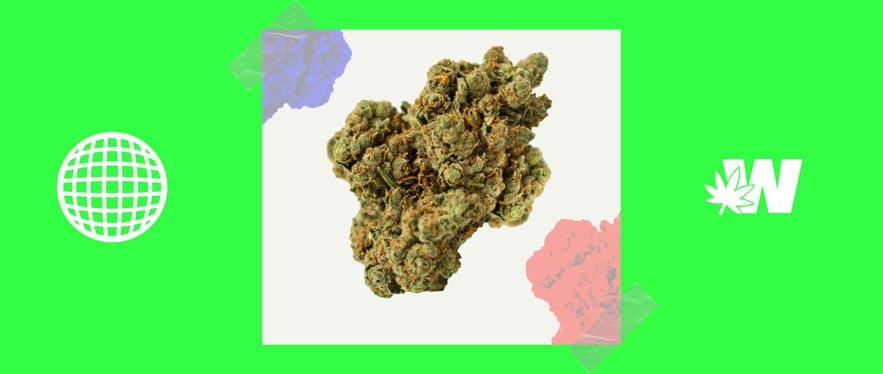
So, THC, huh? It’s like the wild west of the cannabis world. And now, fasten your seatbelts, because we’re deep-diving into Delta 10 THC. Yep, Delta 10, that’s not a typo. Believe it or not, there’s more than just Delta 8 and Delta 9—this isn’t just about going higher in numbers. Each Delta has its own groove, its own vibe, and its way of making you feel a certain kind of way. Delta 10 THC, discovered from cannabis plants, is a new kid on the block. But don’t be fooled, it’s got a rich heritage rooted in those same marijuana plants that also give us Delta 8 THC and Delta 9 THC. Remember when Delta 9 THC was like the big scary king of THC isomers? Well, we’ve met a couple of newer players since, and each has its own quirks.
Delta 10, the legal status of it is a whole other story. You know how it is in the United States—the legal system loves a good loophole. The Farm Bill, ah yes, the herald of hemp’s resurgence. Since it passed, lesser-known cannabinoids have found their moment in the sun. Is Delta 10 THC legal everywhere? Not exactly, but it’s skirting around regulations way easier than Delta 9 does with its 0.3% limit.
Introduction to Delta 10 THC
Delta 10 THC, let’s make it clear, isn’t some clone of its isomer siblings. Originating from cannabis, it shimmies in alongside ol’ favorites Delta 8 THC and Delta 9 THC. Its importance can’t be overstated in a growing variety of THC products on the market. Legal in some areas thanks to a loophole in the Farm Bill, Delta 10 THC finds its footing where Delta 9’s larger-than-life profile may stumble.
Understanding THC Content in Delta 10 Products
So, what happens when we talk about measuring THC in Delta 10 products? Total THC, that’s the phrase you’re gonna hear. When labs assess Delta 10 THC products, they’re not just looking for Delta 10—naw, they’re peeping the full picture, all the THC isomers in there. And how do they do it? Dry weight. It sounds like something a medieval apothecary would say, right? But this dry weight method is all about ensuring purity and potency, so you, the consumer, will know what to expect.
And what about that potency? People love their THC products mighty potent. It’s all about the experience, you see. Is that mellow high gonna transport you to a serene meadow, or is it a heady dive that turns you philosophical? The potency is key in shaping what sort of trip you’re gonna take.
Measuring THC Levels in Delta 10 Products
You want to know the real characters in this story? ACS Laboratory is one of them. Testing methods for THC concentration in Delta 10 products are key players. They provide the figures that tell you exactly what’s in that shiny new cannabis product you’ve got your eyes on. Quality control’s no small fry, it’s the heart and soul of a reliable THC industry. All regulated under an eagle eye when it comes to marijuana testing—gotta keep those THC levels honest, especially in consumable hemp products.
Potency Differences Between Delta 8, Delta 9, and Delta 10 THC
Now, what makes Delta 8, Delta 9, and Delta 10 THC differ in which way, huh? Effects vary, my friend. Delta 8 THC is your mild darling, Delta 9 is the powerhouse, and Delta 10, well it sits somewhere in between with a balanced effect that’s unique, some say. That’s how it affects users—tailoring experiences that sometimes none of the others quite match. And what do we make of all the stories, users sharing their tales of bliss or otherwise? Yup, they add color to the canvas, anecdotal evidence painting the real picture.
Legal Considerations for THC Products
Legal talk. We gotta have it. The Agriculture Improvement Act cuts a wide swath toward making certain THC products legit. Delta 10 though, it dances a little differently through U.S. state lines, legality varying like the seasons. 0.3% Delta 9 THC: that’s a magic number. It means THC legal or not. And the legislative winds? Why, they just might redefine the THC industry itself, time will tell.
Health Implications and User Considerations
The health map of Delta 10 THC? It’s a big deal. THC metabolites do their thing in the system, and the National Institute and National Center for health research have something to say about it too. Especially for medical cannabis users tuning into that frequency. Those with chronic conditions considering Delta 10, how’s it going to pan out for them? It’s a house of cards, this world of marijuana use and health effects.
Market Trends and Consumer Preferences
THC products? They’re not a monolith. Trends are chasing after the latest CBD gummies—you know, the ones that look like candy store treats—and then there are vape cartridges taking center stage. Consumer preferences are always shifting; some prefer the old reliability of Delta 8 THC products, others the adventurous spirit of Delta 10 THC products. Companies like Diamond CBD are shaping the market scene, carving niches with their diverse offerings.
Conclusion and Future Outlook
So, what can we expect ahead in the THC realm? More changes, more shifts. The future of THC products and the ongoing narrative of cannabis use is evolving. THC testing and regulations, they’re gonna take center stage with potential forward-march in legislation. But let’s not forget—you gotta know what you’re getting into; consumer education on THC content and potency is key to understanding this delicate balance.